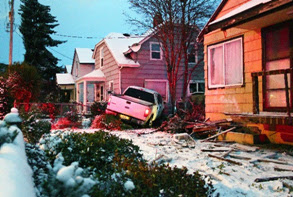November 23, 2010
With the snowstorm that hit Monday afternoon at 3:30 just as the jobsite was shutting down, everyone is thinking about winter – how to get home, for one thing, and, looking ahead, how the new building will perform to keep us warm once we’re living inside.
Our project’s energy model is designed around what we call a “super-insulated shell.” The roof, walls and windows will all be high performing, meaning we’re insulating at a much higher level than code demands. The greater insulation will keep the building from experiencing the large interior temperature swings that plague normally-insulated buildings. Those buildings, in turn, use more heating or cooling energy to keep the interior temperature constant. Our building is designed to use much less -- in fact, we’ll use only about 32% of the energy required by a standard new office building in Seattle and the Puget Sound region. This will make ours the most energy efficient office building in Western Washington.
Once our R-50 roof was on, attention turned to the walls. Our big concrete shell received its first new winter coat, late last week – a 1” thick layer of spray-on, closed-cell polyeurethane foam on the inside of the 8” thick concrete walls. This insulation layer will be joined later by traditional fiberglass batts in the wall furring. Together, they and the 8” thick concrete walls form an R-30 barrier against the elements.
Interior framing is underway and the office plan’s central open space – the forum, we call it – is taking shape. This is where we’ll hold firm-wide gatherings and invite the community in for after-hours events.
- Steve Rice, Partner
Rice Fergus Miller




